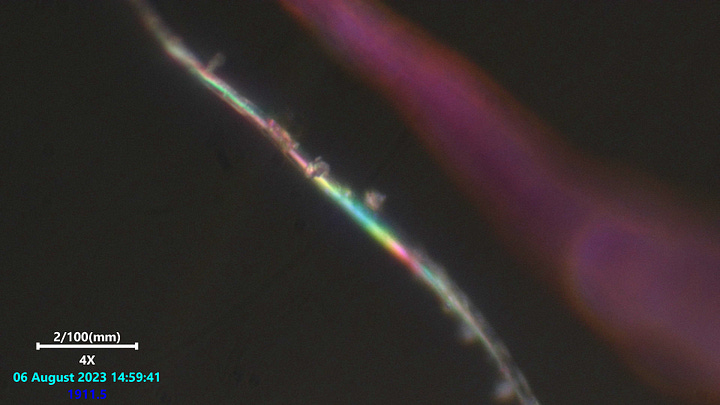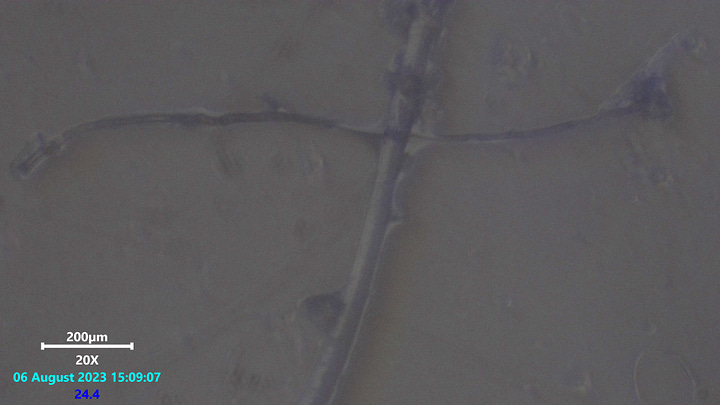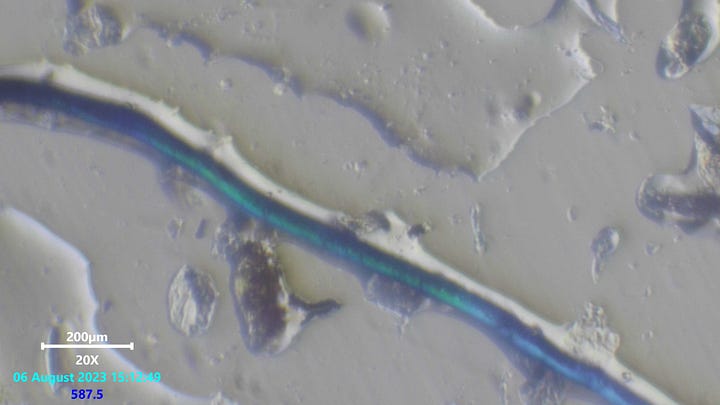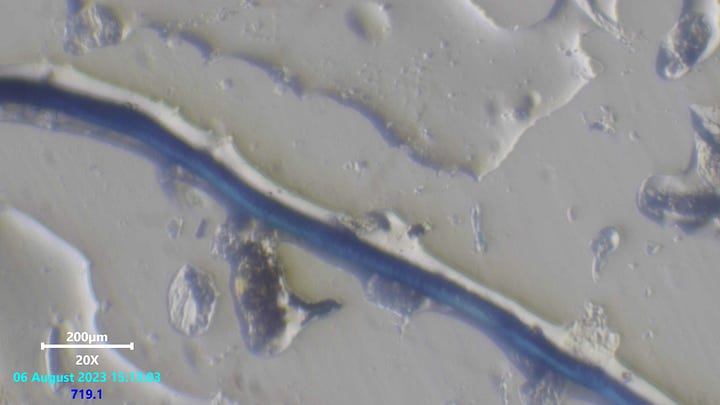Polarized filters for Vacksine/Morgellons Microscopy
A simple form of visual spectroscopy that can indicate possible composition complexity. Here we look at fibers using the technique.
Suspect fibers and how they really appear using polarized filters.


Looking for new microscopy techniques i came across the idea to view samples using the polarized light technique. I quickly discovered that morgellons, warfare type fibers are likely to have intricate colors seen in most of them when using these filters which indicate either solid or chemical complexity.
The technique is almost like a useless version of spectroscopy. Or not so useless in this case. We may not be able to tell exactly what those colors represent chemically but we can see there is a whole bunch of chemicals and other materials present within the fiber. Textiles did not seem to show the same exciting colors at all. in fact most were clear or showed to be their dyed color using the filters.




It was rarely observed that the gels them selves or other artifacts showed anything but clear using the filters. some crystal structures and gels occasionally appeared very slightly pearlescent. I get the feeling that the fibers are a very significant and much more mature stage of the morphology or one of the systems which develope.


Why would the structures that imply most complexity not be the most significant features in these samples. Of course there is the crystalline chips we have seen. but we dont always see these chips form in blood and other samples as much as we do these gels, fruiting bodies and pesky fibers. What these fibers do is still not clear. At times CDB or Quantum dots can be seen inside them, sometimes busting out. Often these fibers also do not contain them too, so are the fibers all doing the same thing, or are their jobs different from each other ? Well, maybe there is a clue in the colors of these fibers seen using filters. Real spectroscopy of the fibers alone would be helpful. comparing one to the other, they do seem different in color arrangement/light wave freqeuncy.




I think less mature fibers may take time to accumilate chemicals and minerals from their surrounding envirement. Possibly it varies by the task of the fiber and the envirement it is subject to. but these are all just qeustions. Have a go at using polarized light and see if you can begin correlating any patterns. it cant hurt.
Help the citizen research by helping to provide equipment and supplies so we can go deeper.
I am using KO-FI right now and appreciate you clicking the link to go there and contribute.
Thank you every one !


Hi Karl I have a bunch of filters to try... thanks for the insights...
I have never seen a cloth fiber with so many colours. These would either correspond to QDs properties or to the chemicals used to fabricate an optic fiber with specific light dispersion properties. (See this optic fiber under a microscope, it is a crystal!:
https://www.keyence.fr/ss/products/microscope/vhx-casestudy/chemistry/optical-fiber.jsp )